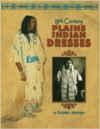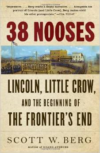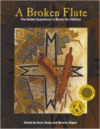Description
The music lover who is listening to Indian music for the first time is apt to be perplexed by his novel experience. He may protest that “It all sounds alike,” that “They only have one tune,” and in all seriousness finally ask, “But is it music?” Such honest reactions are not uncommon among the uninitiated. They are normal human responses to the unfamiliar and are not peculiarly related to Indian music. Similar questions have been raised about the art work of our best contemporary composers, artists, writers, and architects by those who are unable to view the new art in its social setting and to see it in its historic relationship with the past. Persons who would know more about the “first Americans,” with whom our past three and a half centuries of history is so intimately connected, will find in Indian musical traditions a full, expressive revelation of the inner life of these interesting people. For the Indian, music is a medium of communication and contact with the supernatural, and since all the varied activities of life find their respective places in the Indian’s cosmos, there are songs for every occasion. The hard and fast distinction between sacred and secular which we are accustomed to make loses its definiteness in the Indian’s world. There are songs for the making of rain, Guardian Spirit songs for success in hunting, fishing, and gambling, songs for the protection of the home, the curing of the sick, lullabies, love songs, corn-grinding songs, social dance songs, and songs connected with legends. From this brief, functional listing, it will be noted that music was closely associated with the daily and seasonal activities of living. Though the Indian is not lacking in aesthetic enjoyment of his native music, he rarely regards it as something to listen to apart from its social and ceremonial function. For the open-minded, open-eared listener, Indian music is neither inaccessible nor difficult to enjoy. Patient and repeated hearings of these songs will gradually reveal the subtle, haunting beauty that is enfolded in their carefully modelled forms. Here one will find the same artistic features-color, symmetry and balance of form, bold, striking designs, logical unity and coherence of thought -that distinguish Indian painting, pottery, weaving, and silversmithing, so widely admired and enjoyed. Like the music of the Greeks, and like folk music in its purest, primeval form, Indian music is basically monophonic, single-lined. There are occasional excursions into heterophony whereby one voice or group of voices temporarily deviates from the melodic line of the song while others adhere to the established pattern. Such examples of part singing, however, are relatively rare. The simplicity of this monophonic music may fall strangely on ears that have been conditioned by the thick harmonic and contrapuntal texture, rich orchestration, and massive volume of our Western European music. Just as it becomes necessary to adjust one’s aural perspective in turning from symphonic music to the more modest and economical medium of chamber music, so must one adjust one’s listening for Indian music.






Reviews
There are no reviews yet.